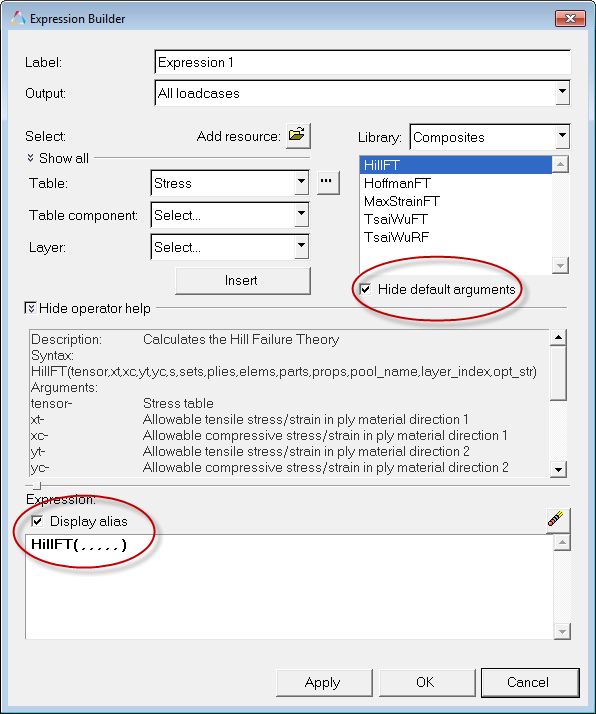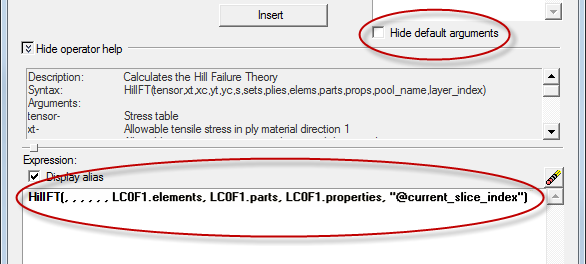Default Arguments |

|

|

|

|
|
Default Arguments |

|

|

|

|
Operators are designed such that they must be passed to all of the necessary tables and arguments in order to function. They are stateless and have no access to the tables in the model, or result, or the relationship between. This design maximizes their maintainability and flexibility and enables them to operate on any valid input, with the only restriction being that the arguments fulfill the requirements of the operator. The side effect of this design is that argument lists can be lengthy. In order to mitigate this, Operators and the Expression Builder populate as many arguments with default values as possible.
When an operator is inserted into the expression, the defaulted argument list is hidden:

In the example above, a failure theory operator is inserted, however since the Hide Default Arguments is checked, only the parameters that do not have a default value are shown. This mode effects how the operator will be inserted into the expression text, and will not change any existing text. An expression can consist of Operators that have default values shown, in addition to ones that have default values hidden. Additional arguments can be added to the inserted Operator, by simply adding a comma-separated list of parameters.
The Operator above will appear as follows with the Hide Default Arguments option deactivated:
